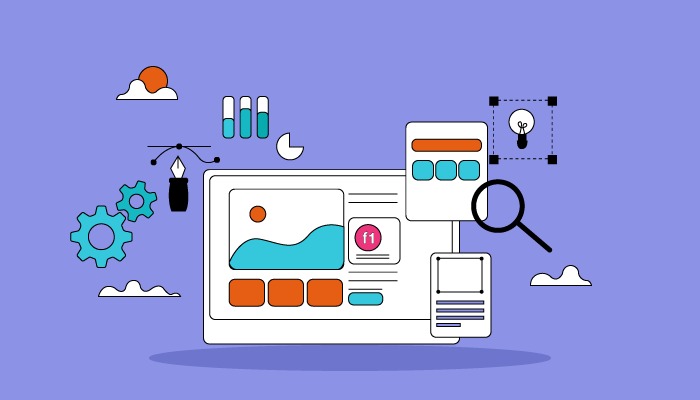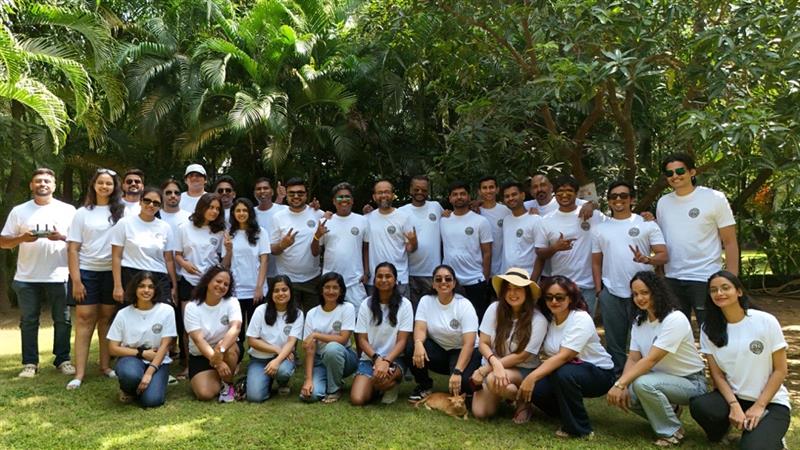
The Pivotal Role of Consistency in Elevating the Usability of B2B Design Systems
Crafting exceptional digital experiences is nothing less than a goldmine for success in the current digital era, especially for B2B brands. The better the user experience, the better the customer satisfaction and loyalty, which ultimately translates into more revenue.
According to Forbes, a consistent design system can boost revenue by 23%.
As we connect the dots between outstanding digital experiences and B2B success, it is difficult to ignore the glue that holds it all together- the consistency in design systems.
Consistent design is like a beautifully composed piece of music. Like a symphony where everything- from the vocals to the piano, to the guitar, and every other instrument is consistent and forms a musical harmony.
Without consistency in design systems, things may look messy and confusing, disrupting the smooth and pleasing experience for users.
Let us delve into the intricacies of consistency in design systems and its significance for B2B success.
Significance of Consistency in B2B Design Systems
Crafting a user-friendly interface hinges on the magic of a unified design. This can only be unlocked through a consistent design system.
Think of consistency as the rope in a tug of war: every element in the design system clings to it, and if an element doesn’t, the entire system risks falling apart.
Consistency binds together a diverse team of product managers, leaders, content, front-end developers, and designers fostering a smooth and collaborative environment.

It is like a rule book that everyone can refer to craft a seamless design system, ensuring that everyone is on the same page, and promoting cohesion and unity in the overall design process.
Consistency is not just important for maintaining a smooth workflow, it also shapes how users see your brand. When your design is consistent, they trust and remember your brand more. Familiarity with the design makes people feel good about your brand and think of it positively.
A consistent design system also facilitates ease of scalability. It allows the flexibility of adding, modifying, or adapting to new elements without causing chaos and disrupting the overall design.
Crucial Ingredients for Ensuring Consistency in B2B Design Systems
Now that it is clear why consistency is essential in B2B design systems, let us have a look at the core elements that uphold it.
Visual Design Language
Crafting a visual design language creates a unified look and feel. So, It is beneficial to define the guidelines for various visual elements like colors, icons, typography, spacing, imagery, motion, and sound.
Version Control
Implementing version control helps track all the modifications in a project, ensuring everyone is in sync and using the most up-to-date design elements.
Component Libraries with Thorough Documentation
Another element that upholds consistency in a design system is a component library with comprehensive documentation of every component and its usage.
It defines what different components like buttons, forms, icons, and other building blocks are all about, how they can be used, and where they can be used.
Component libraries are not only useful for maintaining consistency but also for ensuring efficiency by offering quick access to different design components.
That is why you must maintain a component library and document different components.

Brand Guidelines
Brand guidelines ensure consistency in the brand’s visual identity, tone, and messaging for both internal and external stakeholders.
Reports suggest, that by maintaining color consistency alone, your brand recognition can rise by 80%.
Sticking to these guidelines helps in strengthening the brand’s image and building trust.
Feedbacks
Taking feedback from diverse teams not only helps in crafting an aesthetically pleasing and functional design but also ensures synergy between perspectives and corporate goals.
Strategies to Ensure Consistency in B2B Design Systems
Smart planning and actions are the cornerstones for ensuring consistency in B2B design systems. Here are some action steps that we, at f1Studioz follow to achieve this goal.
Performing Usability Testing
Performing usability testing on actual users is a massive opportunity to enhance user experience by gathering their insights and making the necessary tweaks.
It also helps in removing any inconsistencies in a design system and maintaining a seamless and user-friendly interface.
This iterative process is essential for creating designs that truly resonate with the users.
Onboarding New Team Members
Onboarding new members is the toughest challenge when it comes to maintaining consistency in B2B design systems.

This challenge can be overcome by defining a suitable team structure for maintaining or creating the design system.
Here are the three models to establish an appropriate team structure:
- The overlord model – There is one Overlord or overseer who is responsible for supervising and maintaining consistency across the whole design system.
- Team model – There is a dedicated team that oversees the maintenance of the design system.
- Collaborative Contribution Model – In this model everyone from the respective teams contributes their thoughts and ideas to the design system.
Adopting any of these three models will help streamline the maintenance of the design system when it comes to onboarding new team members.
Cross-Team Collaboration
Cross-team collaboration fosters creativity and harmony through the convergence of different skills and perspectives.
It also breaks down barriers, facilitates consistent design, and ensures that the design aligns with both, users’ needs and the overall business objectives.
However, cross-team collaboration is not as easy as it sounds. Managing and collaborating with a large pool of people with different skills and viewpoints can be a task.
So, the question is how to maintain an effective collaboration among different teams.
Here is what I think:
Maintaining cross-team collaboration
- Creating a communication group on online platforms such as Teams, Slack, or any other platform will aid in clear communication and discussions among the relevant teams.
- Documenting and presenting the design system is a great way to educate team members and gain buy-in from stakeholders by showing the value of the design system.
- In my past experiences, I’ve noticed senior leaders may not fully appreciate the team’s contributions, using their authority to change decisions. Fostering mutual respect, recognizing unique strengths, and acknowledging each team member’s value are essential for fair and effective collaboration.
- It is also crucial for everyone to learn continuously from user insights and user testing. Therefore communicating these insights is essential to ensure that everyone on the team is on the same page and aligned with the users’ needs.
These were some strategies for maintaining consistency in design systems. If you want to know more about how you can boost your B2B success using a strong UX design, you can check out our blog on unlocking B2B growth with powerful UX designs.
Critical Challenges in Maintaining Consistency in B2B Design Systems
There are many roadblocks that B2B brands face on their journey of ensuring seamless and consistent design.
Overcoming these roadblocks is essential for providing a unified and unforgettable user experience to the customers.
Let’s have a look at the major challenges that disrupt the harmony of B2B design systems.
Communication Gap
A lack of communication in the team is a recipe for disaster. This disrupts the healthy collaboration between the design and development teams negatively impacting attention to detail and quality of design.
Ensuring smooth communication and collaboration among diverse teams is of the utmost importance for maintaining consistency in the design system.
Scaling and Change Resistance
Another significant challenge lies in the resistance to change and scaling within B2B design systems.
There is notable pushback when attempting to scale, change, or introduce new elements to the system, disrupting the overall consistency.
Overcoming this resistance becomes more manageable through clear and effective communication of the benefits of updating or changing the design system to the team.
Lack of a Dedicated Team
Initiating and sustaining a consistent design system hits a roadblock when there is no dedicated team in place. There are coordination and execution issues.
Therefore, it is necessary to have a focused unit, regardless of the size dedicated to ensuring continuous development and compliance to the defined guidelines.
There are numerous advantages of having a dedicated team to look after maintaining a consistent design system.
Some of them include smooth communication, efficient decision-making, and a unified approach toward maintaining consistency in the design system.
Conclusion
In the intricately woven dynamics between exceptional digital experiences and B2B success, consistency in design systems is something that emerges as the foundational thread.
It binds each and every element of the user journey, unifying it to compose a seamless and user-friendly interface.
However, there are various components required to achieve a consistent design system these include visual design language, version control, component libraries, brand guidelines, and user feedback as well.
Besides these key ingredients, it is also crucial to perform usability testing, establish an appropriate team structure for maintaining the design system, and ensure a smooth cross-team collaboration.
Maintaining a consistent design system comes along with its challenges. B2B companies also need to overcome the hurdles of communication gap, scalability resistance, and lack of a dedicated team to achieve the objective of a consistent design system.

In conclusion, the journey to consistency in B2B design systems is both challenging and rewarding. Yet, the fruits of this labor are evident in a brand’s strengthened image, user trust, and the ability to seamlessly navigate the ever-evolving digital landscape.
As we embrace consistency in design, we enhance user experiences and advance closer to success in the competitive world of B2B interactions.
For more insights on offering delightful digital experiences to your customers, you can go through The Blue Book– f1Studioz’s bible for crafting enjoyable user experiences.
Visit us at f1studioz







